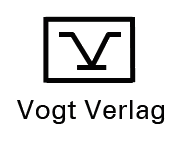Details
| Autor: | Manu Viswambharan Thayyil |
| Titel: | Analysis and Design of Silicon based Integrated Circuits for Radio Frequency Identification and Ranging Systems at 24 GHz and 60 GHz Frequency Bands |
| Typ: | Dissertation |
| Fachgebiet: | Informationstechnik |
| Auflage: | 1 |
| Sprache: | Englisch |
| Erscheinungsdatum: | 25.09.2023 |
| Lieferstatus: | lieferbar |
| Umfang: | 246 Seiten |
| Bindung: | Soft |
| Preis: | 69,00 EUR |
| ISBN: | 9783959470674 |
| Umschlag: | (vorn) |
| Inhaltsverzeichnis: | (pdf) |
Abstrakt in Englisch
This scientific research work presents the analysis and design of radio frequency (RF) integrated circuits (ICs) designed for two cooperative RF identification (RFID) proof of concept systems. The first system concept is based on localizable and sensor-enabled superregenerative transponders (SRTs) interrogated using a 24 GHz linear frequency modulated continuous wave (LFMCW) secondary radar. The second system concept focuses on low power components for a 60 GHz continuous wave (CW) integrated single antenna frontend for interrogating close range passive backscatter transponders (PBTs).
In the 24 GHz localizable SRT based system, a LFMCW interrogating radar sends a RF chirp signal to interrogate SRTs based on custom superregenerative amplifier (SRA) ICs. The SRTs receive the chirp and transmit it back with phase coherent amplification. The distance to the SRTs are then estimated using the round trip time of flight method. Joint data transfer from the SRT to the interrogator is enabled by a novel SRA quench frequency shift keying (SQ-FSK) based low data rate simplex communication. The SRTs are also designed to be roll invariant using bandwidth enhanced microstrip patch antennas. Theoretical analysis is done to derive expressions as a function of system parameters including the minimum SRA gain required for attaining a defined range and equations for the maximum number of symbols that can be transmitted in data transfer mode. Analysis of the dependency of quench pulse characteristics during data transfer shows that the duty cycle has to be varied while keeping the on-time constant to reduce ranging errors. Also the worsening of ranging precision at longer distances is predicted based on the non-idealities resulting from LFMCW chirp quantization due to SRT characteristics and is corroborated by system level measurements.
In order to prove the system concept and study the semiconductor technology dependent factors, variants of 24 GHz SRA ICs are designed in a 130 nm silicon germanium (SiGe) bipolar complementary metal oxide technology (BiC-MOS) and a partially depleted silicon on insulator (SOI) technology. Among the SRA ICs designed, the SiGe-BiCMOS ICs feature a novel quench pulse shaping concept to simultaneously improve the output power and minimum detectable input power. A direct antenna drive SRA IC based on a novel stacked transistor cross-coupled oscillator topology employing this concept exhibit one of the best reported combinations of minimum detected input power level of −100 dBm and output power level of 5.6 dBm, post wirebonding. The SiGe stacked transistor with base feedback capacitance topology employed in this design is analyzed to derive parameters including the SRA loop gain for design optimization. Other theoretical contributions include the analysis of the novel integrated quench pulse shaping circuit and formulas derived for output voltage swing taking bondwire losses into account. Another SiGe design variant is the buffered antenna drive SRA IC having a measured minimum detected input power level better than −80 dBm, and an output power level greater than 3.2 dBm after wirebonding. The two inputs and outputs of this IC also enables the design of roll invariant SRTs. Laboratory based ranging experiments done to test the concepts and theoretical considerations show a maximum measured distance of 77 m while transferring data at the rate of 0.5 symbols per second using SQ-FSK. For distances less than 10 m, the characterized accuracy is better than 11 cm and the precision is better than 2.4 cm. The combination of the maximum range, precision and accuracy are one of the best reported among similar works in literature to the author’s knowledge. In the 60 GHz close range CW interrogator based system, the RF frontend transmits a continuous wave signal through the transmit path of a quasi circulator (QC) interfaced to an antenna to interrogate a PBT. The backscatter is received using the same antenna interfaced to the QC. The received signal is then amplified and downconverted for further processing. To prove this concept, two optimized QC ICs and a downconversion mixer IC are designed in a 22 nm fully depleted SOI technology. The first QC is the transmission lines based QC which consumes a power of 5.4 mW, operates at a frequency range from 56 GHz to 64 GHz and occupies an area of 0.49 mm2 . The transmit path loss is 5.7 dB, receive path gain is 2 dB and the tunable transmit path to receive path isolation is between 20 dB and 32 dB. The second QC is based on lumped elements, and operates in a relatively narrow bandwidth from 59.6 GHz to 61.5 GHz, has a gain of 8.5 dB and provides a tunable isolation better than 20 dB between the transmit and receive paths. This QC design also occupies a small area of 0.34 mm2 while consuming 13.2 mW power. The downconversion is realized using a novel folded switching stage down conversion mixer (FSSDM) topology optimized to achieve one of the best reported combination of maximum voltage conversion gain of 21.5 dB, a factor of 2.5 higher than reported state-of-the-art results, and low power consumption of 5.25 mW. The design also employs a unique back-gate tunable intermediate frequency output stage using which a gain tuning range of 5.5 dB is attained. Theoretical analysis of the FSSDM topology is performed and equations for the RF input stage transconductance, bandwidth, voltage conver- sion gain and gain tuning are derived. A feasibility study for the components of the 60 GHz integrated single antenna interrogator frontend is also performed using PBTs to prove the system design concept.


